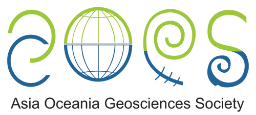
Meetings related to VarSITI:
16th Annual Meeting Asia Oceania Geosciences Society
Asia Oceania Geosciences Society (AOGS) was established in 2003 to promote geosciences and its application for the benefit of humanity, specifically in Asia and Oceania and with an overarching approach to global issues. Read more about AOGS
16th Annual Meeting Asia Oceania Geosciences Society
July 28÷August 02, 2019, Singapore
web-address: http://www.asiaoceania.org/aogs2019/public.asp?page=abstract.htm%C2%A0by

- Learn about obtaining visa, as well as apply for your visa
- Obtain USA New Presidential Proclamation on Visas
Click here: http://www.ustraveldocs.com/
View a list of sessions (here)
Abstract Deadline: 12 February 2019
The organizers encourage submission of manuscripts for the section of interest and particularly to section below: List of sessions for which VarSITI participants are invited
Received on Jan 19, 2019
Dedong Wang
ST23: Coupling Between Inner-magnetospheric and Ionospheric Particle Populations
Conveners: Dedong Wang (GFZ), Yoshizumi Miyoshi (Nagoya Uni.), Zhigang Yuan (Wuhan Uni.),
Chao Yue (UCLA), Qiugang Zong (Peking Uni.),
The Earth's inner magnetosphere contains different charged particle populations, such as the Van Allen radiation belts, ring current particles, and plasmaspheric particles. Their energy range varies from eV to several MeV, and the interplay among the charged particles provide feedback mechanisms which couple all those populations together. Ring current particles can generate various waves, for example, EMIC waves and chorus waves, which play important roles in the dynamic evolution of the radiation belts through wave-particle interactions. Ring current electrons can be accelerated to relativistic radiation belt electrons. Plasmaspheric particles can also affect these processes. In addition, precipitation of ring current and radiation belt particles will influence the ionosphere, while up-flows of ionospheric particles can affect dynamics in the inner magnetosphere. Understanding these coupling processes is crucial. We invite presentations on recent progress concerning these coupling processes. Contributions from all relevant fields, including theoretical studies, numerical modeling, observations from satellite and ground-based missions, such as Van Allen Probes, Arase, THEMIS, MMS, Cluster, SuperDARN, magnetometer, optical imagers, and IS-radars, are welcome.